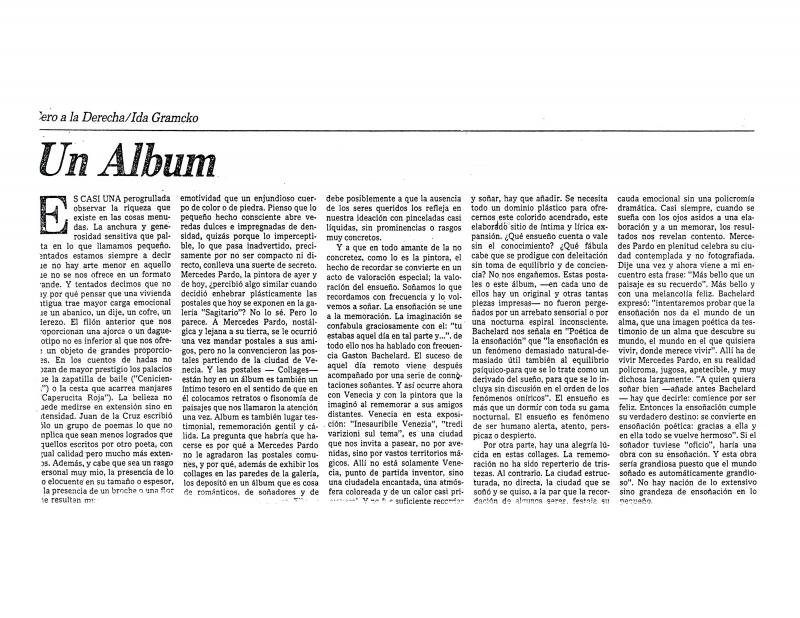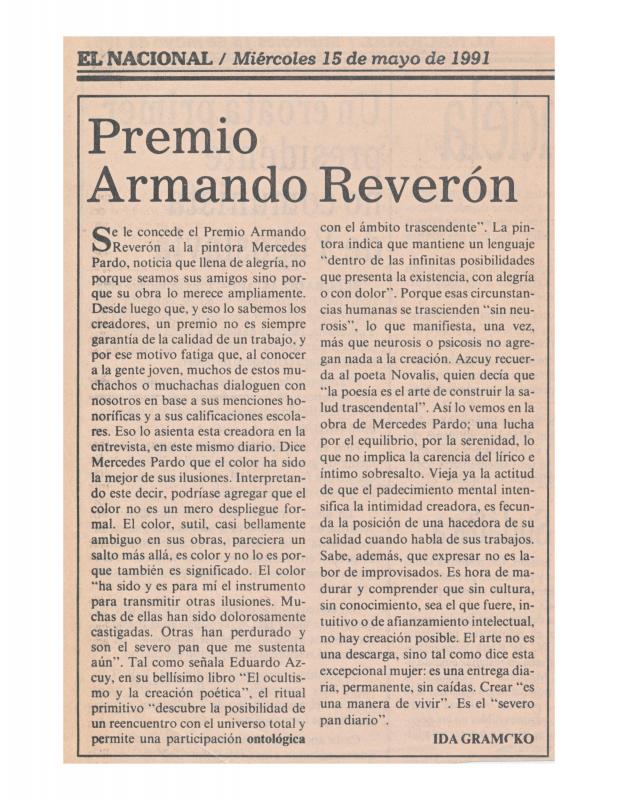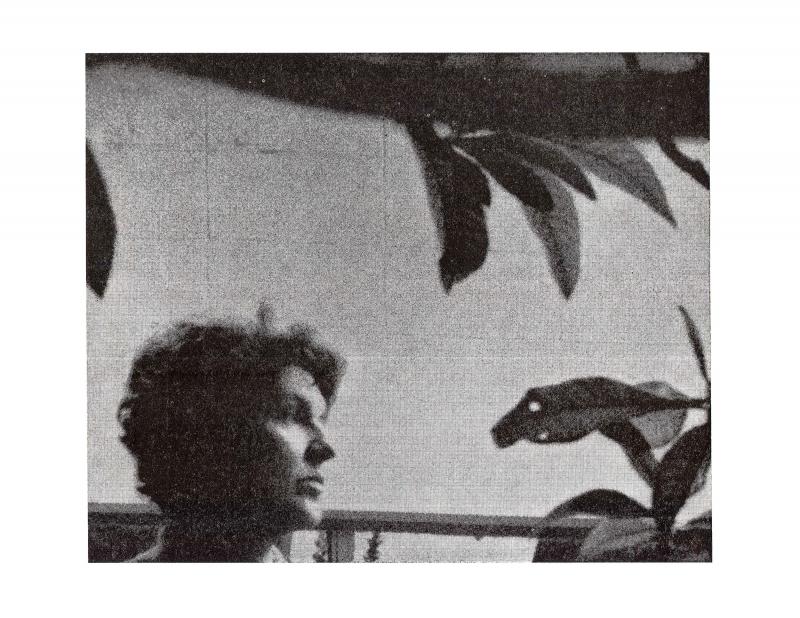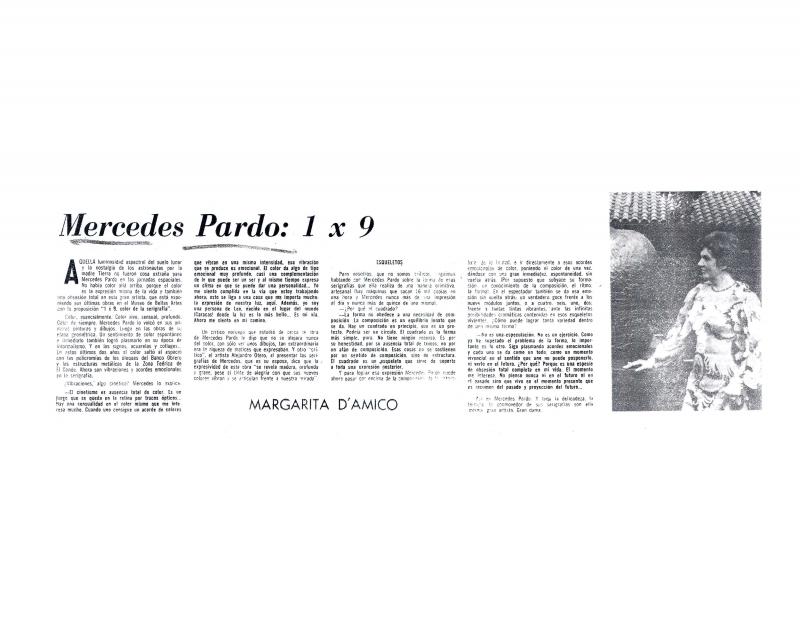The title of the article, “Ser de Sansueña,” refers to a poem by the Spanish exile Luis Cernuda, where Sansueña is a mythical city that encapsulates the nostalgia for his homeland. Venezuelan poet and writer Yolanda Pantin takes this reference as a starting point to reflect on the nostalgic and poetic traits of Mercedes Pardo’s personality (1921–2005). The title “Portrait of Mercedes Pardo” is an apt representation of the intentions of the article. In fact, Pardo’s art is only mentioned in passing and is not analyzed here. Nevertheless, the text contributes to Pardo’s literature as a testimony on the artist from the viewpoint of a literary figure. Pantin mentions another prominent poet, Ida Gramcko (1924–1994), who also contributed reflections on Pardo from a cultural and literary perspective rather than an art-critical perspective. Gramcko is mentioned in this article for her concept of “rueda poética,” a term she used to refer to the country’s “modern utopia.” Pantin argues that Pardo participated in it with “faith, talent, and enthusiasm,” thus positioning her as a pioneer of modern culture in Venezuela, while also depicting Pardo as both a “dreamer,” and a “nostalgic.”
The text is centered on Pardo as a woman, with comments on the sound and tone of her voice, the words she uses, her accent, her sense of humor, and the setting of their meeting. Pantin makes very few references to Pardo’s approach to art, by arguing that she truly can “see reality,” and that “she is not interested in being categorized in schools, styles, or tendencies.” There is also a mention of a box where Pardo keeps cuttings used to experiment in the preparatory stages of her works. The box is a good example of the experimental nature of her production. The word “dictionary” applied to the box implies a way to see art as a language; elements can recur and provide “harmonies,” therefore, it entails a modular approach, where abstraction provides a combination of different modules. “Harmony” is a reference to music, a frequented theme in Pardo’s literature.
[With regard to texts on Pardo, see in the ICAA Digital Archive, Ida Gramcko, “Un Álbum” (doc. no. 1325250), “Premio Armando Reverón” (doc. no. 1331139). For further reading on Pardo’s modular approach, see Alejandro Otero, “Mercedes Pardo: color de la serigrafía” (doc. no. 1143176); Margarita D’Amico, “Mercedes Pardo: 1 x 9” (doc. no. 1155959); and Roberto Guevara, “Color y módulos en Mercedes Pardo” (doc. no. 1155991).]





